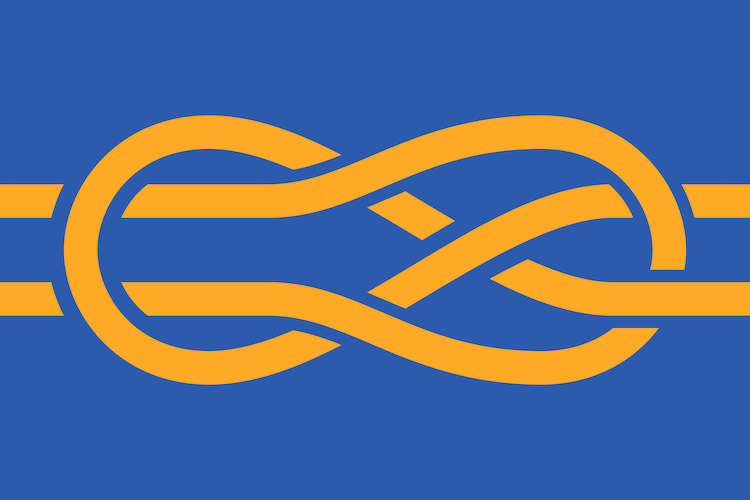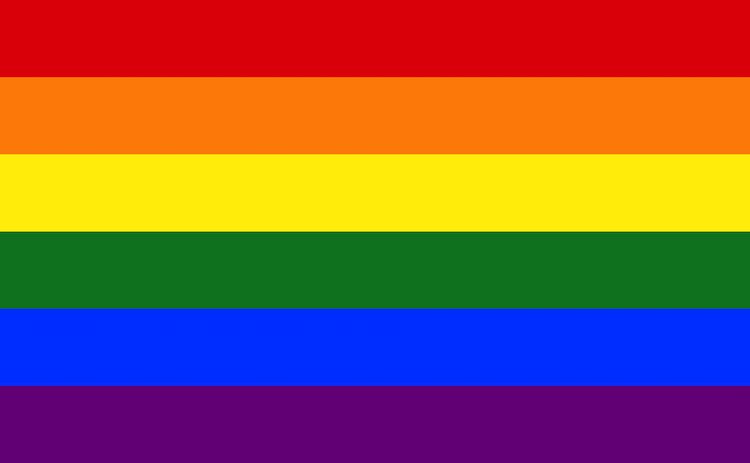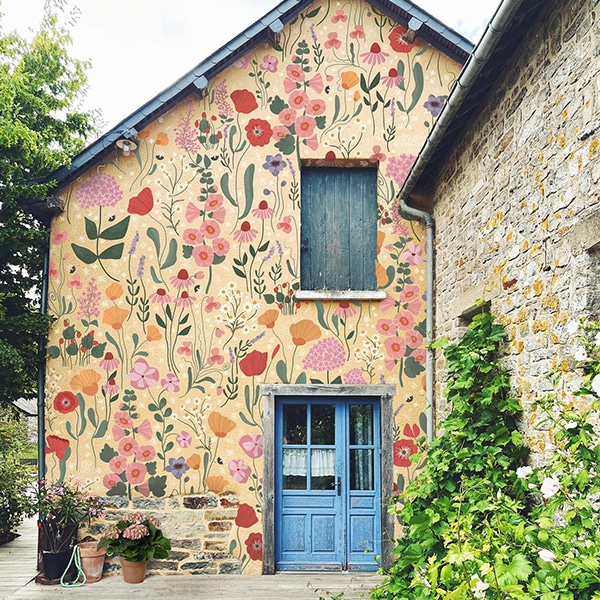
From left to right: Vexillology flag, Rainbow flag, True South flag, The International Flag of Planet Earth
Flags are some of the most important symbols of our identity. Even if you don’t consider yourself a vexillophile—or a die-hard flag fan—you might know the story behind your own nation’s flag. That’s because flags are often the most obvious symbols of our home and means of assimilation. Flags can be used to unite a group of people or to oppress, depending on the design and how it is used.
Instead of telling you some of the countless impactful and beautiful stories behind the flags of various nations, we are breaking down five stories of other flags. These designs and customs demonstrate how flags can make a real difference in the world.
Read on for five beautiful stories about the flags, their design, and the history behind them. These stories might even turn you into a certified vexillophile!
What are vexillology and vexillography?

Vexillology Flag
Vexillology is the study of flags. Vexillologists study not only the designs of flags, but also the history, symbolism, and the ways flags have been used.
The practice of designing flags is called vexillography. Though many flags seem relatively simple, there are plenty of flag design principles that well-designed flags follow. Of course, not every good flag follows the rules, but they are still good starting points for people who want to understand the basics of vexillography.
- A simple flag may be more successful in becoming a recognizable icon.
- Contrast between colors is important to make the design read easily.
- Flags should be timeless as timely details can become less relevant as time passes.
- Avoid using too many colors.
- Keep the edges of the flag easy to see so parts of the design don’t blend into the background as it flies.
Five Stories About the Power of Flags
Tibetan Prayer Flags

Photo: prudek/DepositPhotos
The story behind Tibetan prayer flags is a bit different from the other tales on this list. It is not about one really great flag design that holds a lot of meaning; instead, Tibetan prayer flags are flown with many cloths along a wire. Made up of many different designs and colors, each flag represents ideas about compassion, strength, peace, and wisdom.
These flags hold a lot of symbolism. It is believed that hanging flags will allow the wind to carry the prayers to where they are needed, helping to spread peace to everyone. There are plenty of traditions surrounding prayer flags, including rules on when they should be taken down and how they should be flown.
Rainbow Flag/Pride Flag

Rainbow Flag by Gilbert Baker
Known as the pride flag or the rainbow flag, this design is a perfect example of how flags unite people beyond nationality. It was designed by artist and activist Gilbert Baker to celebrate the diversity of the LGBTQ+ community and movement. Though it was designed for the San Francisco’s Gay Freedom Day Parade of 1978, it has been immortalized as the most recognizable symbol of the LGBTQ+ community.
Baker’s original design for the pride flag included eight colors but was later simplified for easier fabrication of the flag and to give it a clearer identity. The current design includes six colors which, like the original flag, each represent an important idea. The six colors symbolize:
- Red for Life
- Orange for Healing
- Yellow for Sunlight
- Green for Nature
- Blue for Harmony
- Purple for Spirit
Yosegaki Hinomaru (Good Luck Flags)

Yoseegaki Hinomaru flag of Eihachi Yamaguchi
This is no ordinary Japanese flag. Yosegaki hinomaru, or the good luck flag, is a perfect example of how a nation’s flag can become a symbol used for many purposes. The term yosegaki hinomaru translates to a “collection of writing around the red sun” as loved ones would handwrite good luck messages around the hinomaru, the circular sun of Japan’s flag. These flags were an important farewell gift given to Japanese soldiers, especially during World War II. The OBON SOCIETY is working to reconnect the families of veterans with their old good luck flags.
Yosegaki hinomaru are still used today, though not as a farewell to war. They are used as farewell gifts for students going to school, coworkers entering retirement, or to sports teams going off to an important outing that represents the country.
True South Flag

Photo: prudek/True South Flag
The True South flag is a great example of a flag that is making an impact. Designed by journalist Evan Townsend, this flag was produced as a nonpolitical project to create a symbol for Antarctica. The team behind True South hopes that the flag will unite the global community and remind them that since Antarctica does not have a permanent human population, all humans have a responsibility to protect it.
The design for True South is focused on an icy white peak representing the mountains and icebergs of Antarctica. It is mirrored on a compass arrow that together creates a diamond shape in blue and white. The two horizontal strips on the flag represent the long days and nights on the frigid continent. Altogether, the design represents “the hope that Antarctica will continue to be a place of peace and discovery for generations to come.”
If you want to learn more about True South and the team behind it, read the My Modern Met exclusive interview with Townsend.
Flag of Earth

Photo: prudek/The International Flag of Planet Earth
If you are someone who cares about flags, you might have wondered if there was a flag to represent all nations. While there is no official flag for all of planet Earth, there have been plenty of proposals for a universal flag.
The International Flag of Planet Earth is one of several personal ideas proposed for a flag to represent our planet. It was designed by Oskar Pernefeldt as a symbol of unity “to be used while representing planet Earth” and “to remind the people of Earth that we share this planet, no matter of national boundaries; that we should take care of each other and the planet we live on.” Though the flag is not official, it is becoming a popular proposal for the flag of planet Earth.
Related Articles:
Learn All About Antarctica’s First Flag Called ‘True South’ [Interview]
Artist Embroiders U.S. Flag on Cover of TIME Magazine as a Call for Change [Interview]
Revealing Photo Highlights the Enormous Scale of a Flag Flown in the Battle of Trafalgar
Futuristic ‘Tower of the Sun’ Building Mimics Kazakhstan Flag with a Window to Ishim River
Luminous Photos of Antarctica Shine a Light on Its Alluring Icy Blue Surface






















































































